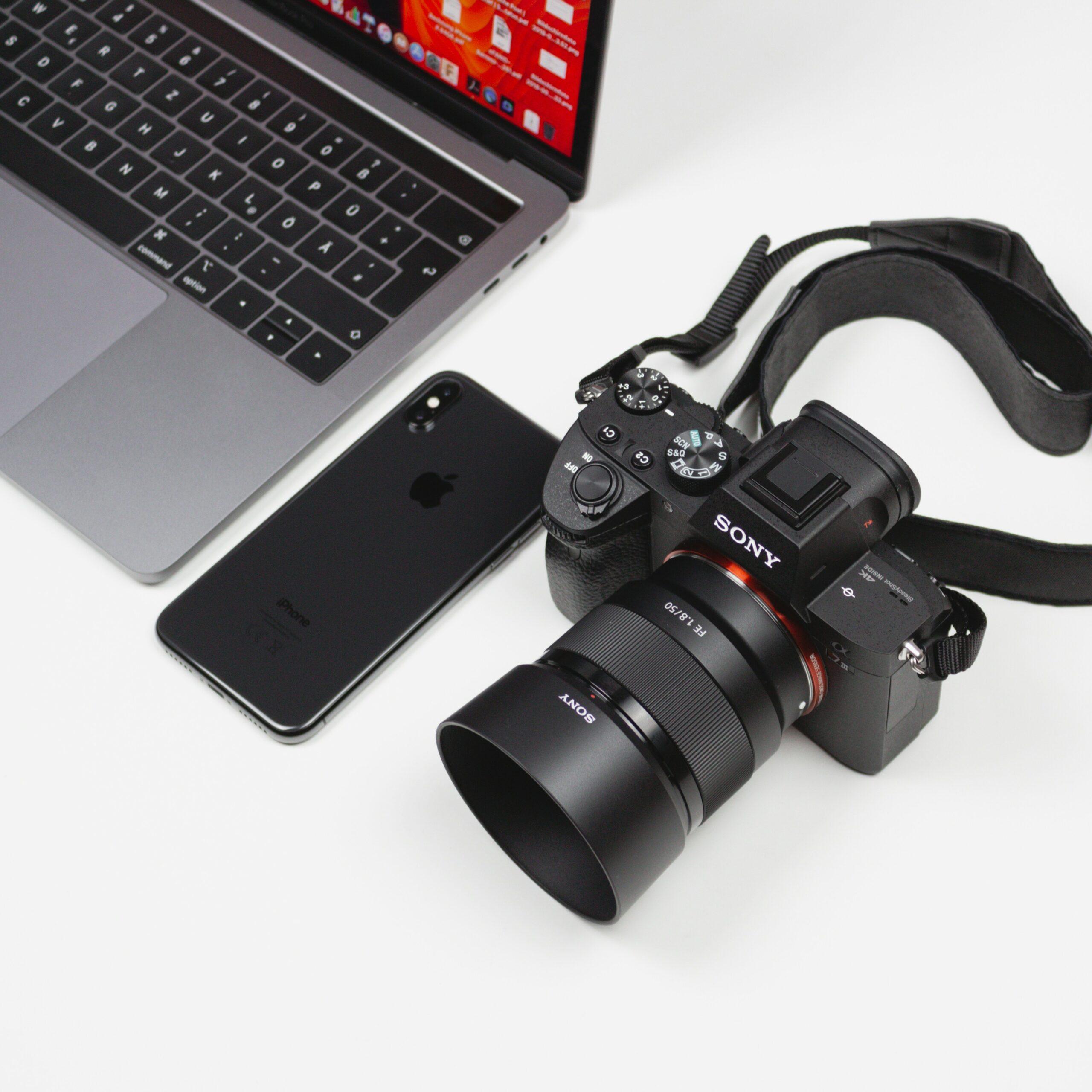In 2025, AI editing photo tools have become more than just a “let's try” trend—It has now become a necessity for professional and hobbyist photographers.
Now, the photography industry is faster-paced than ever, and traditional editing is starting to become too time-consuming.
That’s why social media platforms, content creators, and businesses are looking for solutions for quick turnaround times on high-quality visuals.
This is precisely why the best AI photo editing software becomes the ultimate solution.
They offer the ability to save time, boost creativity, and automate repetitive, tedious tasks without sacrificing quality.
However, most of these AI tools are not equally effective.
Some offer professional-grade control and integration, while others focus on user-friendly automation with fewer customization options.
This guide will give you honest reviews, comparisons, and practical advice on the leading tools in 2025, with a deep dive into the most common questions, like:
- Which AI editing tools are actually worth using right now?
- How do they compare?
- Are they reliable, fast, beginner-friendly, or pro-level?
- Do they really save time? Or do they sacrifice control/quality?
- Which one is best, Luminar Neo or Photoshop AI?
So, it's time for someone to answer these questions, don’t you think?
What Makes a Great AI Photo Editing Tool?
First of all, the greatest AI photo editing tool for you is the one that has specific features that will actually help you improve your workflow.
What are the features you need?
Is it batch editing for efficiency, AI retouching tools for portraits, AI background removal for product shots and social media content, or noise reduction for low-light photography?
Or maybe you need a little bit of everything because these help you reduce repetitive work while focusing on the artistic, fun side of your craft.
The biggest difference between AI vs manual editing in 2025 is the level of control.
As you know, manual editing offers photographers ultimate flexibility, BUT it also requires expertise, patience, and more desk time.
On the other hand, AI tools automate much of the editing process, making it perfect for beginners or busy professionals who want fast and quality results.
I’m not saying that manual editing is completely out of question; I’m saying that AI can be your reliable assistant that makes your life easier.
The other key factor is how these time-saving photo editing tools integrate into a photographer’s workflow.
Do you have to use them as standalone apps, or can you integrate them into existing software like Adobe Lightroom or Photoshop?
The answers to these questions are important because the tool that seamlessly fits into your routine will be more valuable than one that requires extra steps.
And lastly, pricing matters too. Choosing subscriptions or one-time payments often makes a big difference for small creators or businesses.
In summary, the best AI photo editing tools MUST balance features, cost, and usability.
Top AI Photo Editing Tools in 2025: Honest Reviews
1. Adobe Photoshop AI (Generative Fill & Retouch AI)
Adobe Photoshop gets even more powerful and popular with its new AI-powered professional editing tools, like generative fill and smart retouch AI.
Generative fill is a tool that allows you to expand backgrounds, replace objects, or add elements with realistic results.
For example, let's say you want to remove a distracting element from a wedding or birthday photo; you can easily replace it with context-aware detail with Photoshop AI.
Even just this feature makes it one of the most versatile tools available.
However, I must say that Adobe Photoshop’s most advanced options can be a little overwhelming for beginners.
As with everything, there is a learning curve.
Additionally, the subscription fee is a larger investment than other editing tools.
But if you’re a professional or already use Photoshop, these AI-upgraded tools significantly improve your productivity without requiring a new workflow.
For advanced users, Photoshop offers great creative control and expanded artistic possibilities.
2. Luminar Neo
Luminar Neo 2025 is one of the most beginner-friendly AI photo editors available.
Unlike Adobe Photoshop, which is preferred mostly by professionals, Luminar Neo is perfect for hobbyists or photographers who don’t want to spend hours editing.
It has tools like sky replacement, portrait retouching, and AI background removal.
The Luminar vs Photoshop 2025 comparison mostly centers around usability vs control.
Luminar Neo should be preferred by casual users like students, hobbyists, and part-time creators who want polished and quick results and look for more affordable options.
However, there is a slight downside regarding performance.
If you’re working with large RAW files, you can experience slow processing and not have the same level of precision as Photoshop.
Still, Luminar Neo is a strong choice for those who value simplicity and efficiency.
3. Topaz Photo AI
Topaz Photo AI works more like a specialist than an all-in-one editor.
It excels especially at features like AI noise reduction, image upscaling, and sharpening blurry images.
If you’re a photographer who often works in low-light conditions or needs to rescue imperfect shots, Topaz is invaluable for you.
Unlike Luminar or Photoshop, Topaz isn’t meant for creative editing; it’s a companion tool, focusing on improving technical quality.
It’s an easy-to-use tool for small improvements on your photo, like cleaning up a noisy dance floor or sharpening motion blur in candid shots.
So yes, Topaz has limitations, but it also complements Photoshop or Luminar as one of the best AI-powered enhancement tools in 2025.
4. ON1 Photo RAW with AI
ON1 AI Photo editing is a strong opponent of Lightroom since it offers a complete RAW processing workflow with added AI features.
For those looking for a Lightroom alternative with AI, ON1 is worth considering, with AI masking tools that easily isolate subjects, AI-powered retouching, and simplified noise reduction.
It's also more affordable than Adobe products and offers a perpetual license, making it a perfect option for users tired of subscription-only models.
However, if you’re a professional who needs to collaborate or share files, it won't provide the same ease as Adobe.
After all, ON1 is a perfect AI-powered tool for budget-conscious photographers who want a balance of power and price.
5. Capture One with AI Tools
Capture One AI is known for its color grading and tethering capabilities and is a top choice for studio professionals and commercial photographers.
It has also added AI-driven selection and retouching tools to stay competitive and make high-end workflows faster without compromising precision.
That being said, Capture One’s pricing and complexity are not the best for beginners, since it is designed for professionals who prioritize quality and need advanced tools for studio work.
Luminar Neo vs Photoshop AI: Head-to-Head Comparison (2025)
Ok, if you can’t decide between Luminar Neo and Photoshop AI, this chapter is for you.
First of all, the main differences between these two tools are usability and creative control.
Photoshop AI is perfect for professionals who want full control over every detail, while Luminar Neo is for beginners who need speed and simplicity to achieve great results without technical skill.
With Photoshop AI’s generative fill, you can create new backgrounds and compositions, and with Luminar, you can enhance existing images with tools like portrait retouch and sky replacement.
As you can see, both tools can help you save time, but Photoshop’s AI offers more creative flexibility.
Regarding pricing, Photoshop’s monthly subscription can be costly over time, so you can consider Luminar Neo as a more affordable option, especially if you’re a hobbyist.
Ultimately, the choice depends entirely on your needs: Photoshop is ideal for professionals, while Luminar Neo is perfect for creators who value ease of use.
Best AI Photo Editing Tool for Your Needs in 2025
Choosing the best AI tool for photographers depends on your goals.
So, let me summarize all the options you can choose according to your business and needs.
For beginners, Luminar Neo is the best choice since it's simple, intuitive, and produces professional results with minimal effort.
And Canva AI is also a good option for quick edits, especially for social media content.
For professionals, the pro AI editing software winner is Photoshop AI. Its generative fill and advanced tools are perfect for those who need precision and versatility.
If you’re a studio photographer who requires connected workflows, you can also consider Capture One.
For social media creators and marketers, Topaz Photo AI and ON1 are the best for their fast, high-quality results that stand out on crowded feeds.
Ultimately, focus on aligning your choice of software with your needs, maximizing your efficiency, and creative output.
Picture-Perfect Ending: My Honest Take
This honest AI editing review 2025 has shown that while AI tools are powerful, they are not all the same and provide the same solutions.
That’s why choosing the right tool for your workflow depends on your needs and goals.
But whatever your choice is, they can all help you save time, improve results, and stay ahead in the rapidly evolving world of photography.
You’ll also love:
How to Take Product Photos with Your Phone: A Simple Guide to Get Stunning Results
Posing Ideas to Make Your Brand Shine: Stand Out in a Crowded Market
Pinterest Photography Trends in 2025: How to Shoot Viral Images
FAQs
Luminar Neo is better for beginners and hobbyists, while Photoshop AI is better for professionals who need maximum control.
Luminar Neo and Canva AI are the most beginner-friendly options in 2025.
Adobe Photoshop AI is the most preferred option for professionals, with Capture One as an alternative for studio photographers.
No—AI is great for speed and automations of repetitive tasks, but manual editing is still essential for creativity and authenticity.




